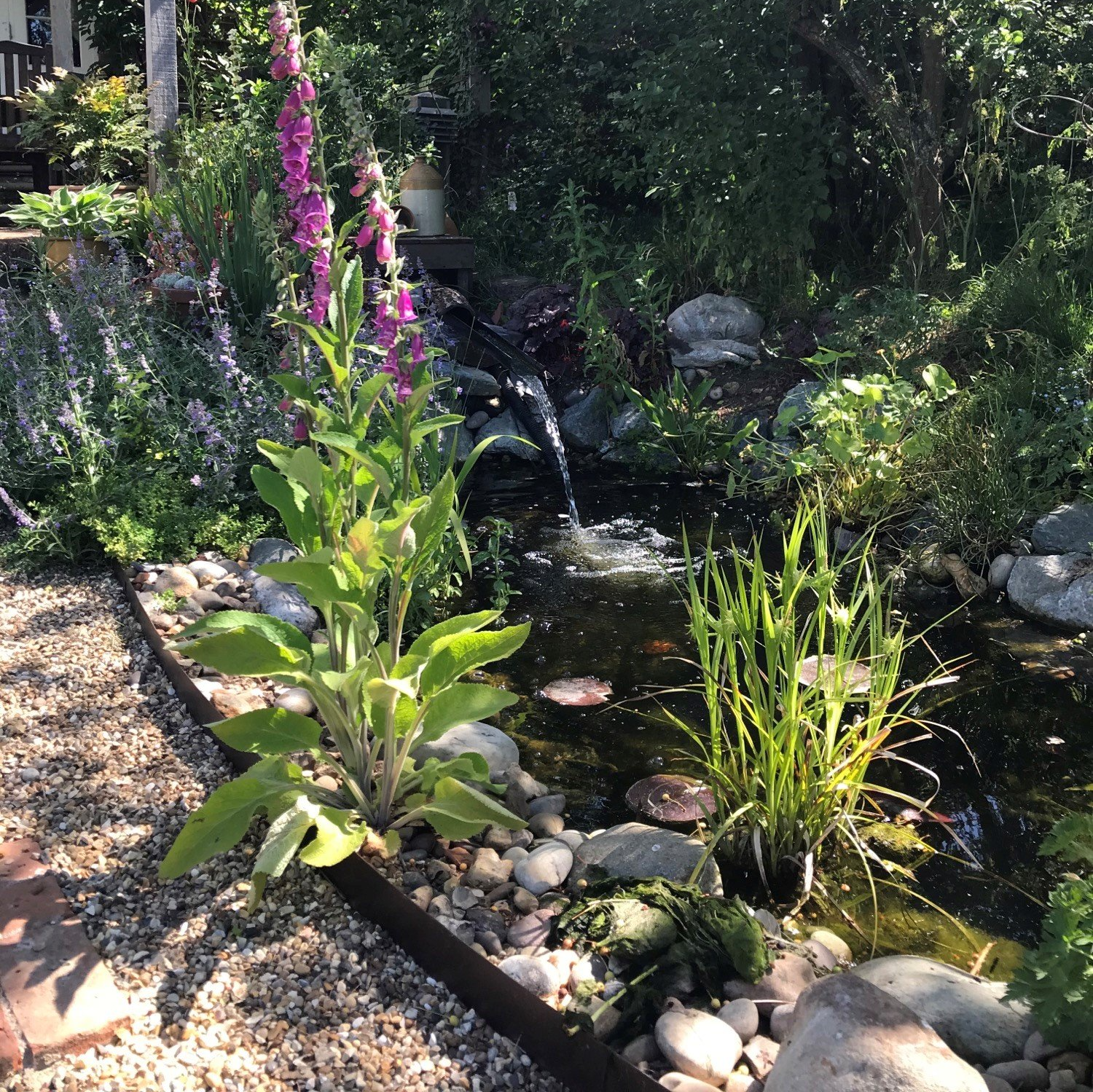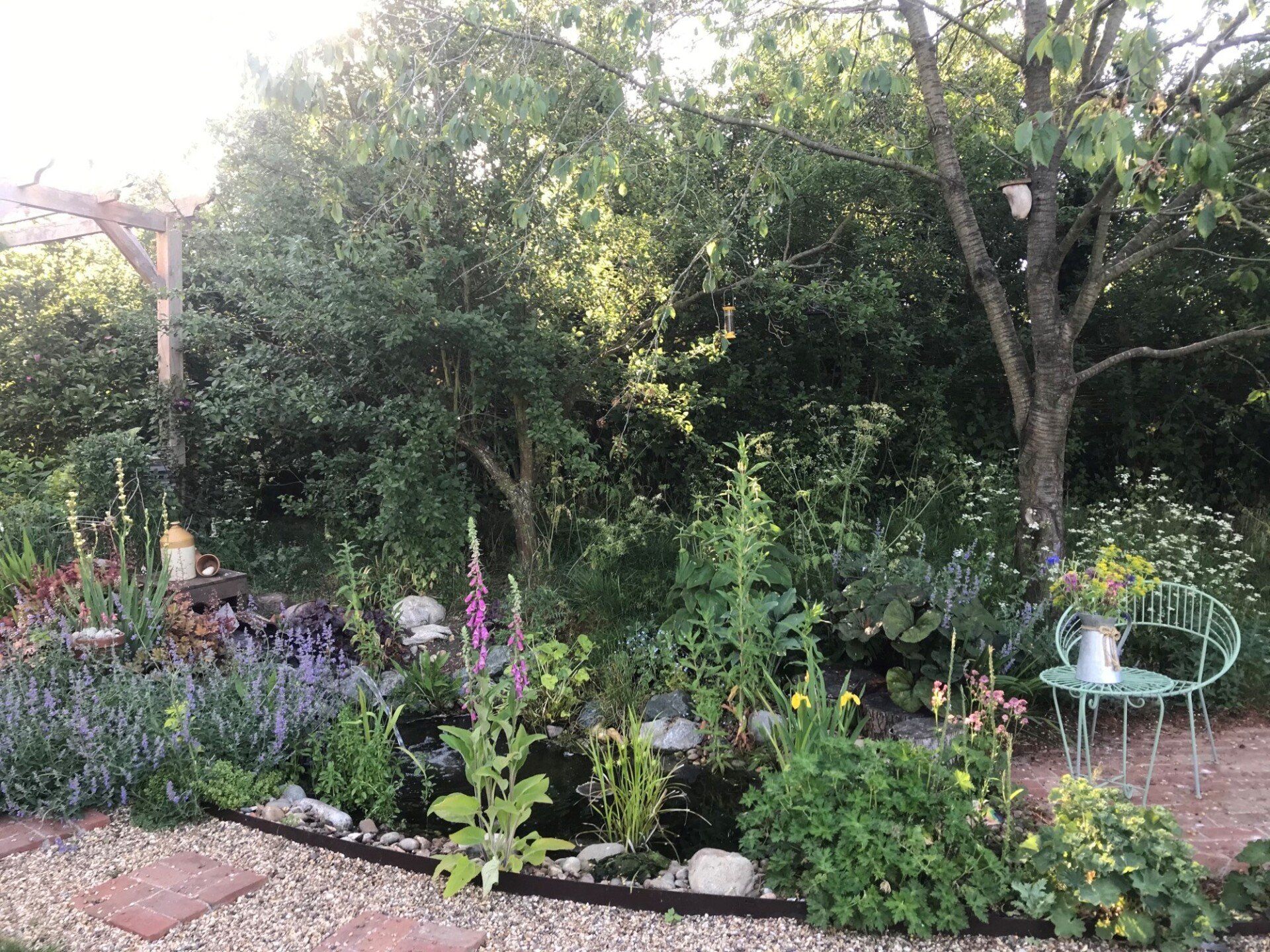Wetlands - The Power of the Pledgee Pond
Ponds are some of the most effective habitats for attracting wildlife into your garden.
If designed right, they provide a haven for all sorts of plants, birds, insects and animals.
These watery worlds play host to a complex habitat of creatures and plants, some of which, like water snails and small crustaceans, never leave.
WildEast pledgee Gale Pryor loves them so much, she even bought one for herself for her 40th birthday, as she explains here:

Welcome to my ponds!
I am a passionate wildlife gardener with a one acre, south facing, free draining plot in south Suffolk. I have added two ponds to this space over the years for both myself and the wildlife I share my space on this planet with. Here is how I have achieved this and some of the joy and benefits that having a pond can bring to your garden and your life.
These ponds mean so much to me adding interest to the space and really bring my garden alive. My first pond is quite large and at the bottom of the garden. It is 16 years old now and was my 40th birthday present to myself. Not everyone’s idea of a special birthday present but it was for me! It is about 13m X 7m in size, created in a natural style by a man on a digger who dug out different levels before lining it with sand and a liner. I then planted it up myself as naturistically as possible using native plug plants with water plants, marginals and wild flowers surrounding it. I continually add stones and logs around the edges to cover the liner and also provide easy access for wildlife as well as places to hide.

It has brought me so much joy over the years, in the spirit of “build it and they will come” we have now seen frogs, newts, grass snakes, dragon flies and damsel flies in or around this pond not to mention the odd wild ducks in the spring. There is nothing nicer than sitting on the bench by the pond on a lovely evening watching all the nature that it brings to the garden. It’s also equally beautiful on a frosty morning in winter when the grasses and rushes are all frozen.
I don’t top up this pond in the summer it is big enough just to allow the levels to drop like they would in a natural pond, if you add tap water to ponds it can drastically affect the nutrient levels and lead to all sorts of issues with algae and blanket weed etc so it is best to be avoided as much as possible. I think sitting beside water is so calming and having it in your garden is a real privilege but it is also something that almost anyone can have, however small their garden, all it needs is a bit of effort and imagination – I can guarantee you won’t regret it.

3 years ago I had an urge to bring some water up closer to the house for both myself and wildlife to enjoy. So, I built another much smaller wildlife pond about 3m X 1.5m which I can see from my kitchen window. With it being nearer to the house I can observe in more detail the small things going on with this pond on a daily basis, such as birds and bees taking a drink on a summers day or dragon flies hovering over the water. I was amazed how quickly it was colonised by larvae and newts within a year.
When cleaning out bits of weed from time to time with a small net it is incredible how much life has arrived in this little pond in such a short space of time. My original plan for this pond was I thought I would like to hear the sound of running water near to the house so I put in a pump and filter system but soon found this to be a mistake. I removed it after 1 year as I found that it didn’t keep the water any clearer than just having a balanced pond with lots of oxygenators in and the water flow was actually driving wildlife away so I much prefer just the still water where birds can take a drink and have a splash in the sunshine.
I can’t recommend highly enough having a pond in your garden, it really does add another dimension and it will bring so much wildlife in too. I am an organic gardener, in fact I can’t imagine any other way of gardening, the answer is to encourage as much biodiversity in flora and fauna in as possible to balance everything and a pond really is a great way to achieve this.

WildEast Blog

Powered by LocaliQ
Follow Us
SIGN UP FOR NEWS & UPDATES
Newsletter Sign Up
Thank you for signing up to our newsletter.
Please try again later.
Privacy / Terms & Conditions / Sitemap
